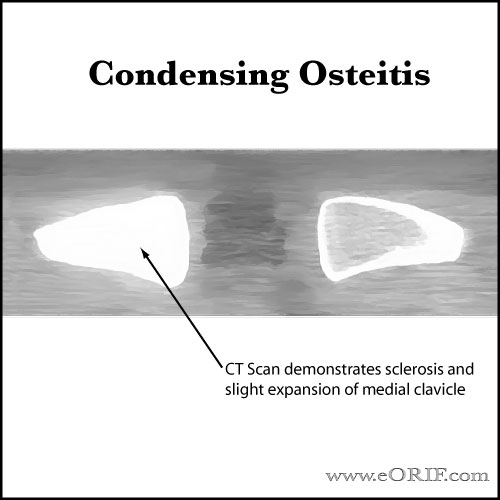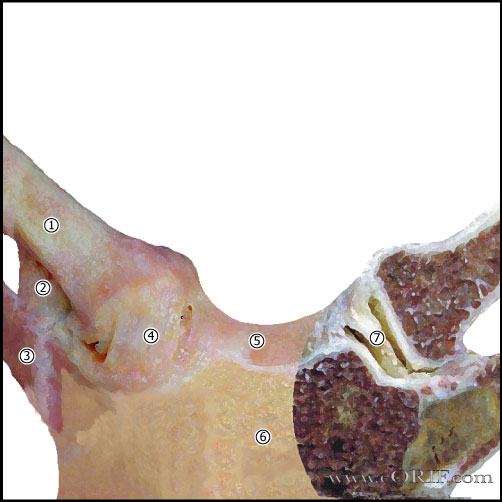|


|
synonyms:
Condensing Osteitis ICD-10
- M12.811 - Other specific arthropathies, not elsewhere classified, right shoulder
- M12.812 - Other specific arthropathies, not elsewhere classified, left shoulder
- M12.819 - Other specific arthropathies, not elsewhere classified, unspecified shoulder
- See all arthropathies shoulder ICD-10.
Condensing Osteitis ICD-9
- 716.81 Other specified arthropathy, shoulder region
Condensing Osteitis Etiology / Epidemiology / Natural History
- characterized by sclerosis and enlargement of the medial end of the clavicle with preservation of the sternoclavicular joint.
- Rare
- Generally women >40yrs old. Usually unilateral.
- Etiology unknown. May be secondary to chronic stress
Condensing Osteitis Anatomy
Condensing Osteitis Clinical Evaluation
- Tender swollen sternoclavicular joint.
- Symptoms generally worsened with shoulder abduction.
Condensing Osteitis Xray / Diagnositc Tests
- AP view, apical lordotic view, serendipity view. Difficult to view on plain films. Xrays demonstrate sclerosis and slight expansion of the medial 1/3 of the clavicle. Joint space preserved.
- CT scan: often helpful to demonstrate sclerosis and slight expansion of the medial 1/3 of the clavicle. Joint space preserved.
- MRI: demonstrates ossifcation of the marrow space. (Vierbloom MAC, Ann Rheum Dis 1992;51:539)
- Bone scan: demonstrates increase uptake in medial clavicle.
- Labs: ESR, CRP and WBC will be normal
Condensing Osteitis Classification / Treatment
- Generally responds well to ice, NSAIDs, activity modifications.
- Consider incisional or excisional biopsy if fails non-op treatment (Kruger GD, JBJS 1987;69A:550)
Condensing Osteitis Associated Injuries / Differential Diagnosis
Condensing Osteitis Complications
Condensing Osteitis Follow-up Care
Condensing Osteitis Review References
- Higginbotham TO, JAAOS 2005;13:138
|


